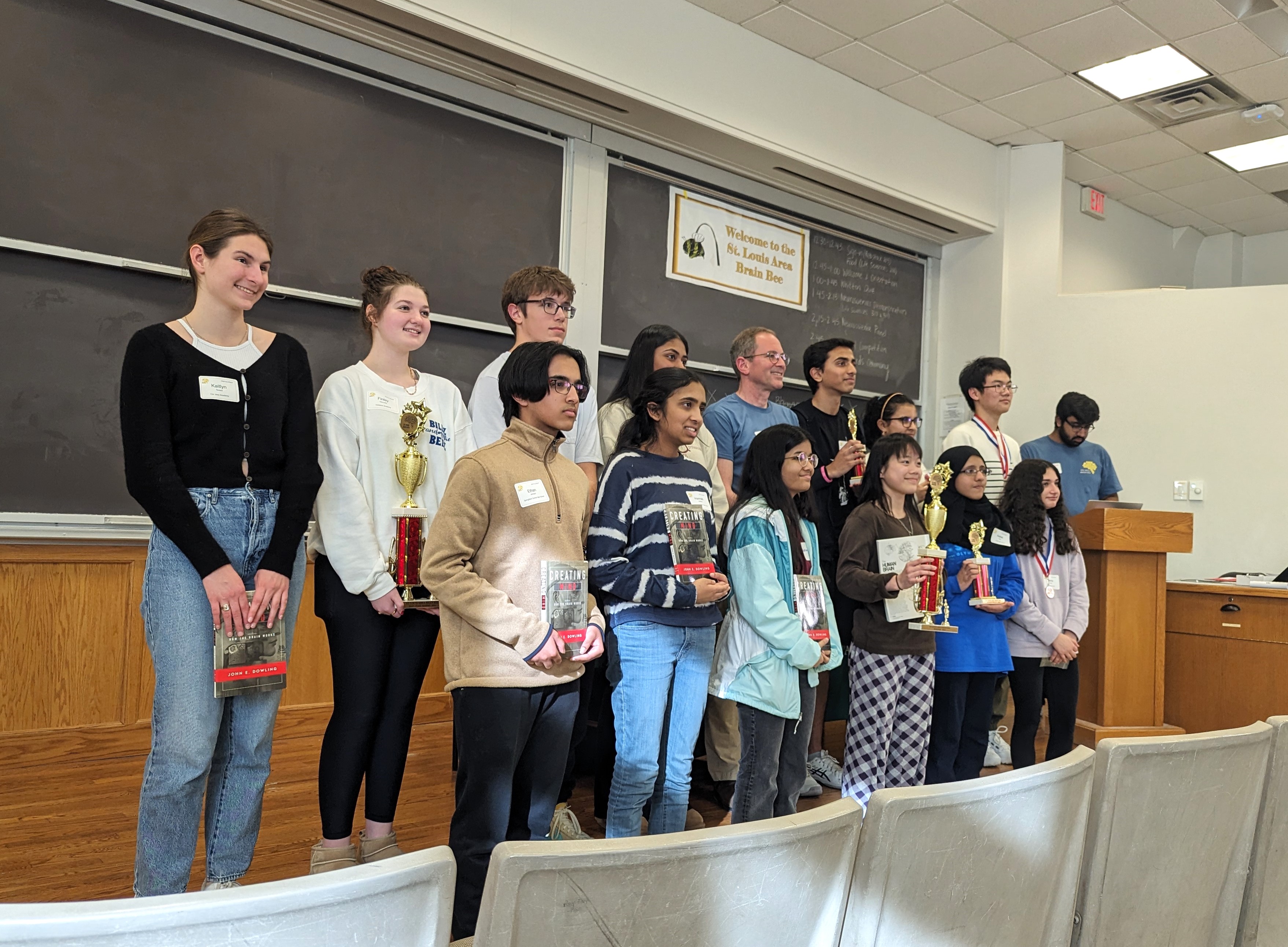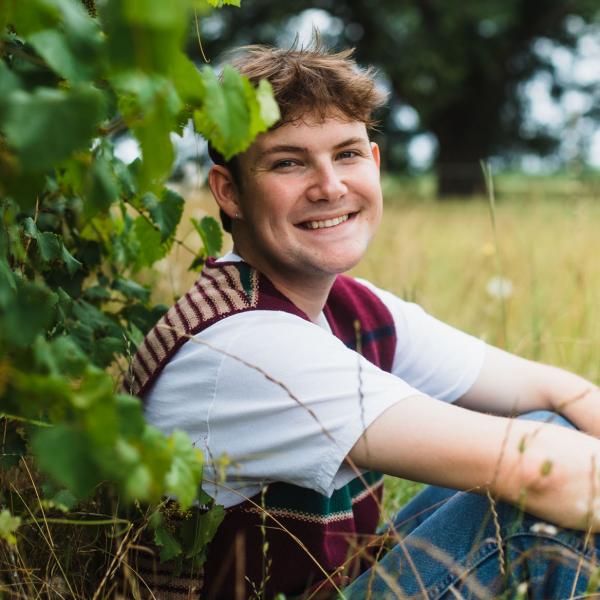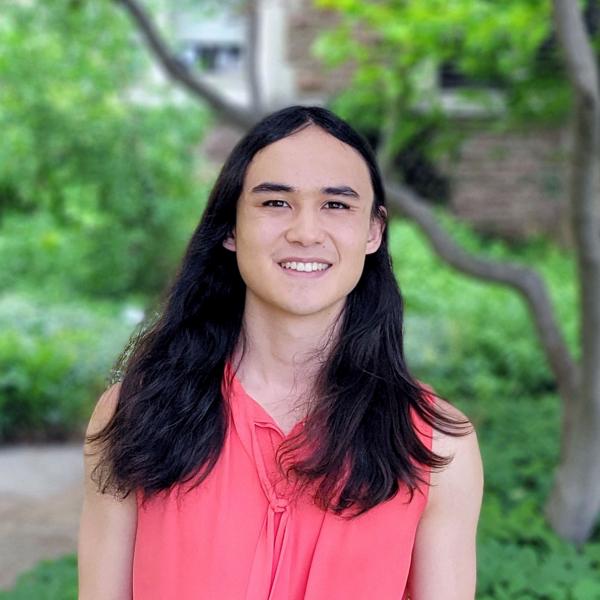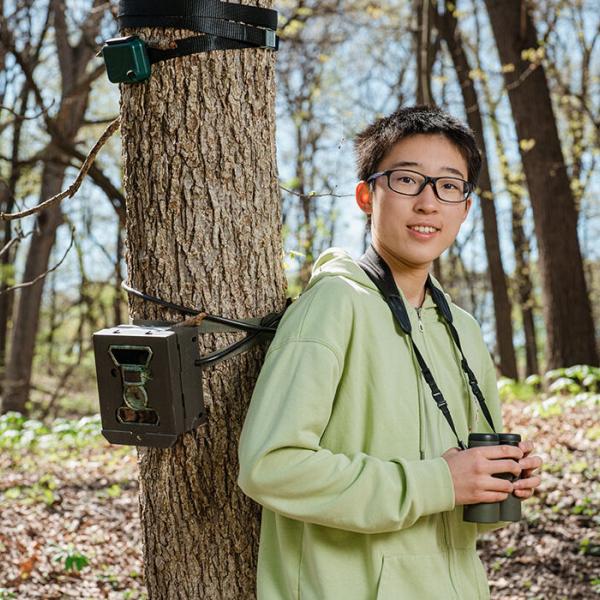Annual St. Louis Area Brain Bee event fosters an interest in neuroscience for local high schoolers.
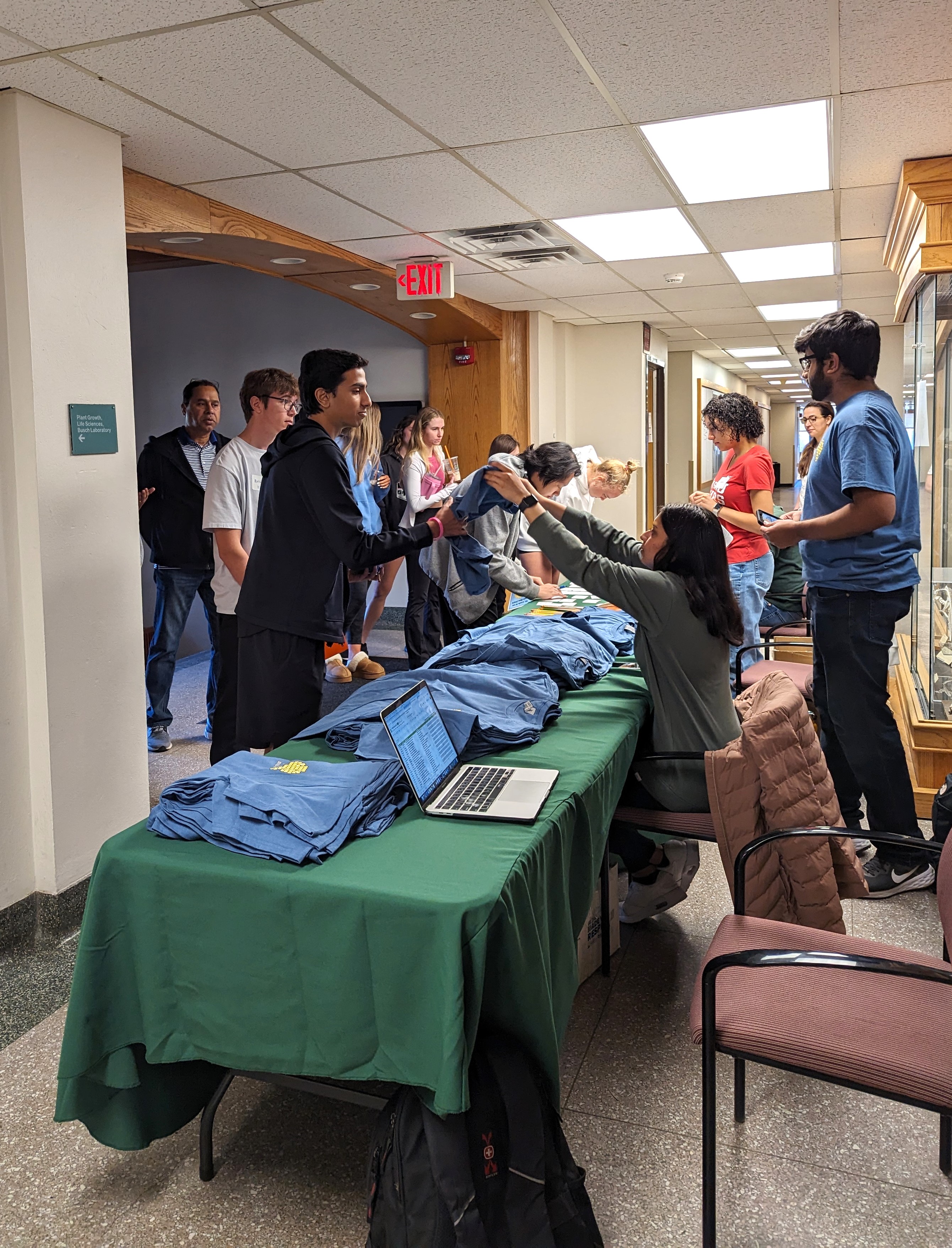
of student volunteers
On a Saturday afternoon, over 60 local high schoolers gather in Rebstock Hall at Washington University in St. Louis for the 14th Annual St. Louis Area Brain Bee (SLABB). The event, which includes fun demonstrations about how the brain works and tests of knowledge about neuroscience, is filled with teenagers from over 25 high schools. Everyone here—the student coordinators, the judges, the panelists—wants to encourage these students to continue their interest in neuroscience. The winner today will not only receive a fully paid trip to the USA Brain Bee later this spring, but also the opportunity to work in a neuroscience lab this summer.
The faculty coordinator for SLABB is Erik Herzog, Viktor Hamburger Distinguished Professor in Arts & Sciences and Director of the St. Louis Neuroscience Pipeline Program. He, along with a team of volunteers, host the event every year. Herzog’s role here goes beyond MC—he takes the time to introduce himself to the students, urging them to reach out to him even after the event is over.
The winners of these local events around the country will move up to the USA Brain Bee, and then to the World Championship held later this year in Chicago, Illinois. Even when taking the allure of these future competitions into account, it’s a little surprising that these teenagers are choosing to spend their Saturday at a Brain Bee (one group of students here even has a dance tonight). The studying takes up even more time. The material for this competition comes from “BrainFacts,” a 71-page document published by the Society for Neuroscience that covers everything from the parts of a neuron to how the brain makes sense of sound to future areas of research.
When asked what was interesting about neuroscience—interesting enough to sacrifice part of her weekend—competitor Stuti Dasgupta says she likes it because, “It’s like you’re learning about yourself.” This is Dasgupta’s third year participating in SLABB and she says she gets better every year. Dasgupta, a junior, has her heart set on WashU for college. Spending her Saturday here is just one way she connects with the university, the Biology Department, and the professors and students that work here.
Other students, like Kate Hulsen, do this competition for fun. “It’s a good way to explore different things,” she says. Hulsen has participated in other competitions like this one at WashU, though most, she confesses, are in engineering.
The first part of the event today is the written exam—a 50 question test created, in part, by neuroscience majors here at WashU. (Herzog later admits to the crowd that the best high schoolers here today always score better than the undergrads themselves.)
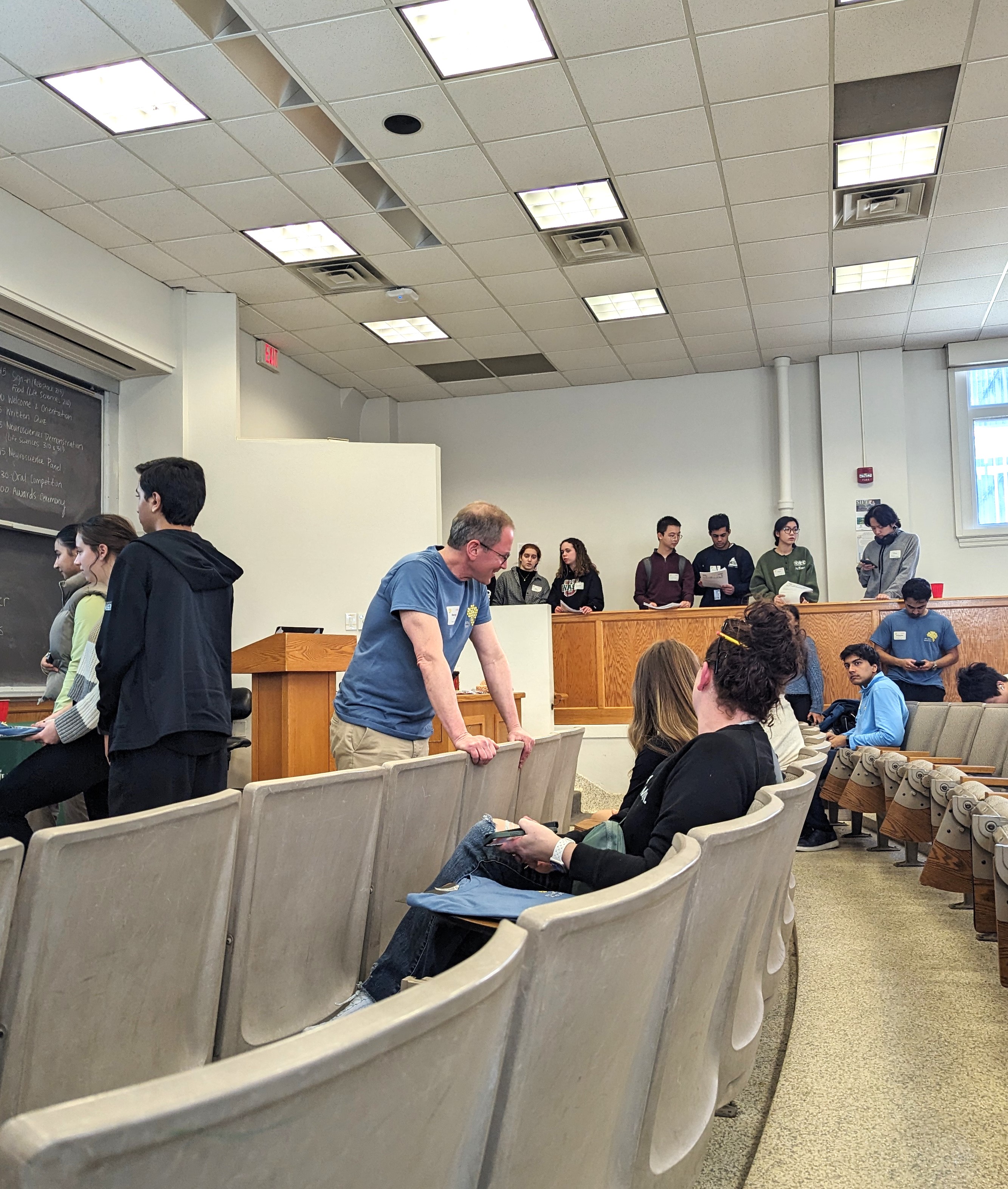
While the written exams are graded, competitors, as well as any parents who tagged along, participate in a few neuroscience demonstrations. Whispers of “that’s so cool” fill the room as WashU student volunteers show off human brains, explain how horseshoe crabs see, and record EEGs. There is also a neuroscience panel, where four researchers at different stages in their careers answer questions about the field. Hysell Oviedo, assistant professor of neuroscience at the School of Medicine, encourages everyone in the room to try to ponder the question: “What seems to be driving your curiosity?” For the students who just spent 45 minutes circling answers on a test, the answer seems to be close by.
Before the oral round starts, Herzog gives the crowd a pep-talk. “What impresses me is how hard you all work to learn material that is not standard in your curriculum in high school,” he says. These students must take the initiative to study neuroscience all on their own. They’re not doing this because someone else is telling them to. Herzog goes on to talk about how this field needs all types of people. “Brain diseases can affect people from all walks of life,” he says.
This year, due to ties on the written exam, the top 12 competitors advance to the oral round. Herzog reads out questions about everything from neurotransmitters to degenerative brain diseases while participants write their answers down on whiteboards. Judges Mary Lambo, senior lecturer in biology, and Timothy Holy, Alan A. & Edith L. Wolff Professor of neuroscience at the School of Medicine, are in charge of deciding which answers are right and wrong. Three wrong answers and you’re out.
After many anxiety-inducing rounds, the winner of SLABB emerges: Diep Tran, a local senior who not only excelled in both the written and oral rounds of the competition (where she only got one question wrong), but who also took the time to ask a few questions of her own. Tran’s interest in neuroscience goes beyond knowing the right answers. She is genuinely curious.
Tran placed 10th in last year’s competition, which motivated her to try even harder this time around. In preparation for SLABB 2024, she not only read the chapters from the recommended book, but also watched a YouTube channel called Neuroscientifically Challenged. The videos are short and easily digestible. “I don’t like to cram all at once,” Tran says. “I space it out.”
Before she works in a lab this summer, Tran will head to the USA Brain Bee Championship in April, held this year at the University of Central Florida. As for that, Tran says, holding her SLABB trophy, “I can’t believe it’s happening.”
